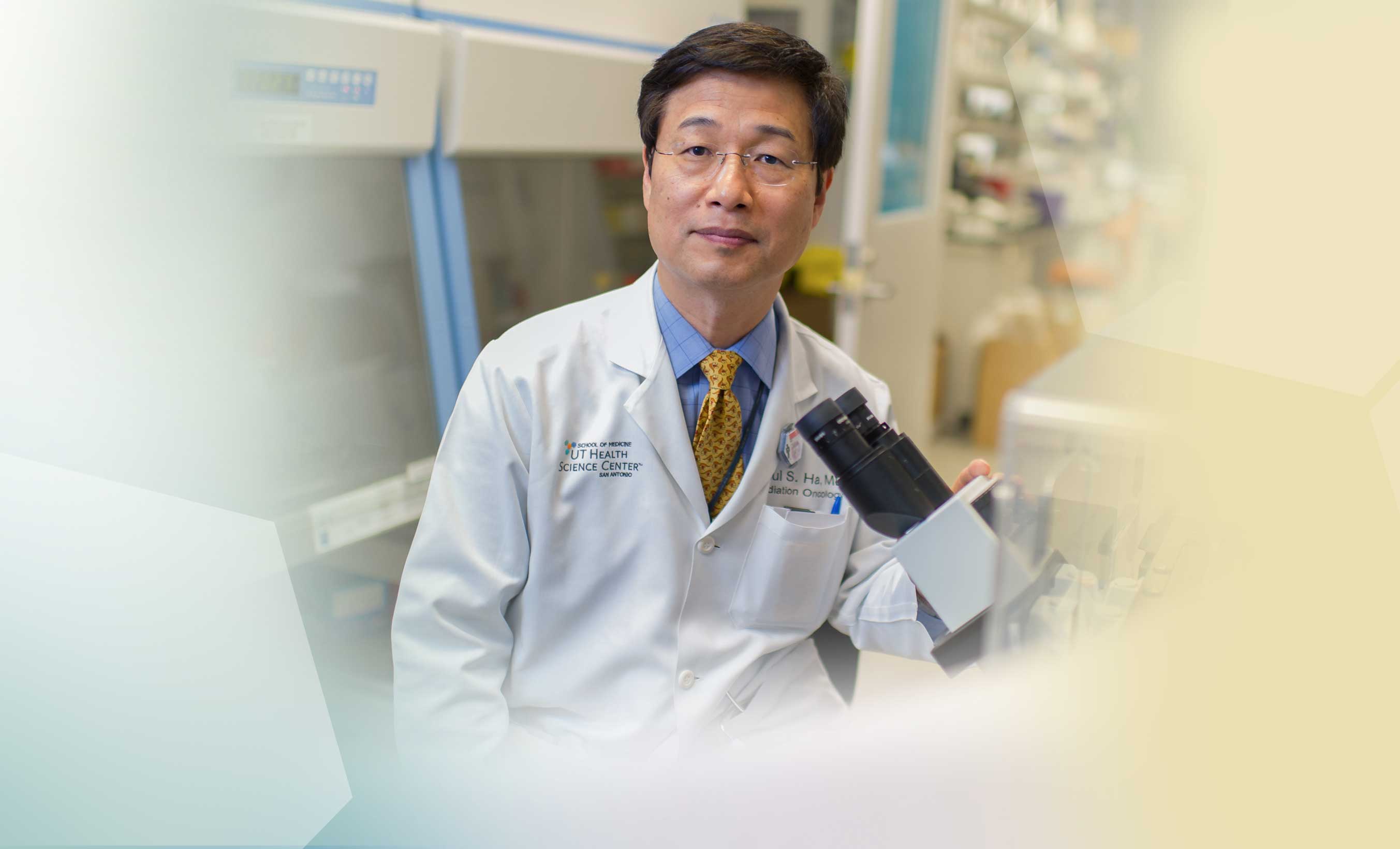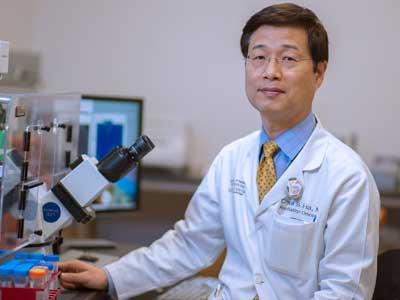One of Dr. Chul Ha’s more memorable encounters with a patient happened when Ha didn’t order extensive treatment at all.
“There was a patient referred to me from another cancer center. He had squamous cell carcinoma of the tongue and had part of his tongue removed,” said Dr. Ha, chairman of the Department of Radiation Oncology at the UT Health Science Center San Antonio. Pathology results revealed plasmacytoma, another kind of malignant growth, at the edge of resection, in addition to the squamous cell carcinoma, and their oncologists recommended his entire tongue be radiated.
Dr. Ha looked at the data, and he came to a different conclusion.
“When I put everything together and looked at it, I said to the patient, ‘Let’s just watch you. Let’s not radiate you right now.’”
It has been five years and the patient continues to be cancer-free. Not only that, but the patient has avoided painful radiation treatments to his tongue and has not suffered potential side effects, such as losing some taste sensation or experiencing ongoing dry mouth. And the patient is profoundly grateful.
“I get a gift basket from him at Christmas every year,” Dr. Ha said.
While a medical student at Harvard University, Dr. Ha thought he would eventually go into medical oncology. He built on that goal through his laboratory work in drug development at the Dana Farber Cancer Institute. But after a rotation through the Joint Center for Radiation Therapy, he was recruited by its chairman, Dr. Norman Coleman.
“That department turned out to be a very special department; the way it is run and the way they take care of patients there,” Dr. Ha said. “I thought they were the smartest doctors, even at Harvard. So I thought it would be really good to be part of that specialty.”
A chance to build
The opportunity to take patient care to the highest level was what brought Dr. Ha to the Cancer Therapy & Research Center. He took over the radiation oncology center at CTRC and the chair of the department of radiation oncology in December 2006 after 14 years at MD Anderson, where he was medical director of the radiation treatment center.
“I enjoyed what I was doing at MD Anderson, but I wanted to make the most out of my life. I came here to build the department,” he said.
In late 2007, he saw the CTRC’s radiation oncology center through its transition into the UT Health Science Center. That meant working on the infrastructure, bringing in new faculty and staff, building the research program, building the residency program – a particular point of pride – and running his own clinical work.
Conducting exciting research and training the brightest students are hallmarks of the best radiation oncology centers, he said. Everything starts from his top priority: impeccable patient care.
He began holding a new patient quality assurance conference. Every new patient’s treatment is reviewed by the entire faculty and residents. Questions are encouraged. Patients have a better shot at better care if more minds are thinking about the treatment, he reasons.
“One thing I am proud of is they are able to speak up about what I do — they feel comfortable saying, ‘Dr. Ha, why don’t you do this?’”

